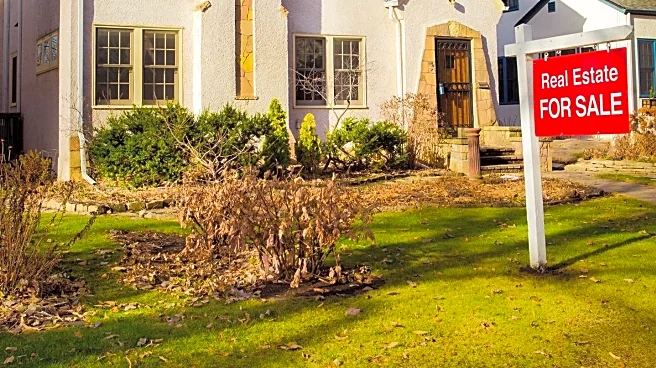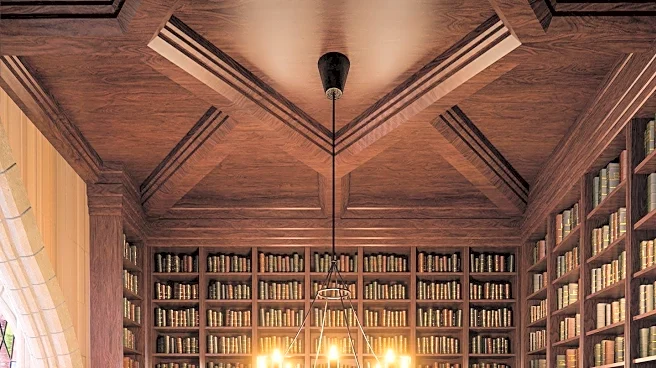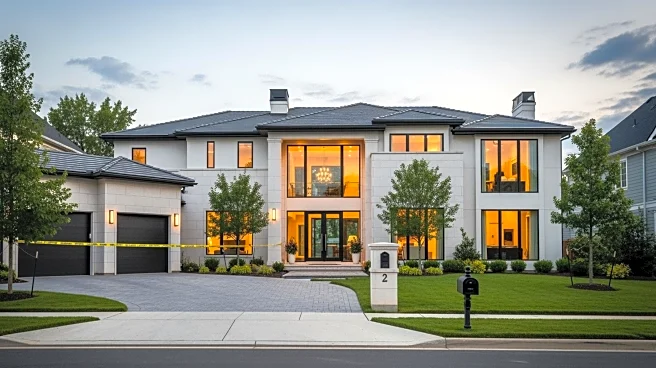What's Happening?
In Columbus, Ohio, a distinctive property known as the Book House has been listed for sale, featuring over 7,000 books in floor-to-ceiling shelves. Designed and built by Guy Marshall, the home is a new construction that mimics the appearance of a historic
mansion. The property spans nearly 5,000 square feet and includes vintage installations and antiques to enhance its historic character. The design evolved organically, with Marshall incorporating books into the interior to fill vast blank walls. The home is currently used as a short-term rental, accommodating up to 24 guests. Built with masonry construction, the Book House is designed to be resilient and cost-effective, using dyed and treated blocks to mimic antique brickwork. The asking price for the property is $1.689 million.
Why It's Important?
The sale of the Book House represents a unique opportunity for buyers interested in properties with distinctive architectural and design elements. The integration of books into the home's design not only adds aesthetic value but also appeals to literary enthusiasts. The property's use as a short-term rental highlights its potential as an investment opportunity in the hospitality industry. The decision to sell reflects the owner's shift towards new projects, indicating a dynamic real estate market in Columbus. This listing may attract interest from those seeking a blend of modern construction with historic charm, potentially influencing trends in property design and real estate investments.
What's Next?
Potential buyers may view the Book House as an investment opportunity, given its current use as a rental property. The unique design and construction methods could inspire similar projects, influencing architectural trends. The sale may prompt discussions among real estate professionals about the value of integrating thematic elements into property design. As the owner moves on to new projects, the real estate market in Columbus may see further innovative developments. Interested parties will likely evaluate the property's potential for hosting events or serving as a cultural landmark, given its distinctive features.
Beyond the Headlines
The Book House's design raises questions about the role of thematic elements in real estate, particularly how they can enhance property value and appeal. The use of masonry construction over traditional wood framing reflects a shift towards more durable and cost-effective building methods. This approach may influence future construction practices, especially in regions prone to environmental challenges. The property's blend of modern and historic elements could spark discussions on preserving cultural heritage while embracing contemporary design. As the real estate market evolves, properties like the Book House may set new standards for creativity and innovation in home design.














